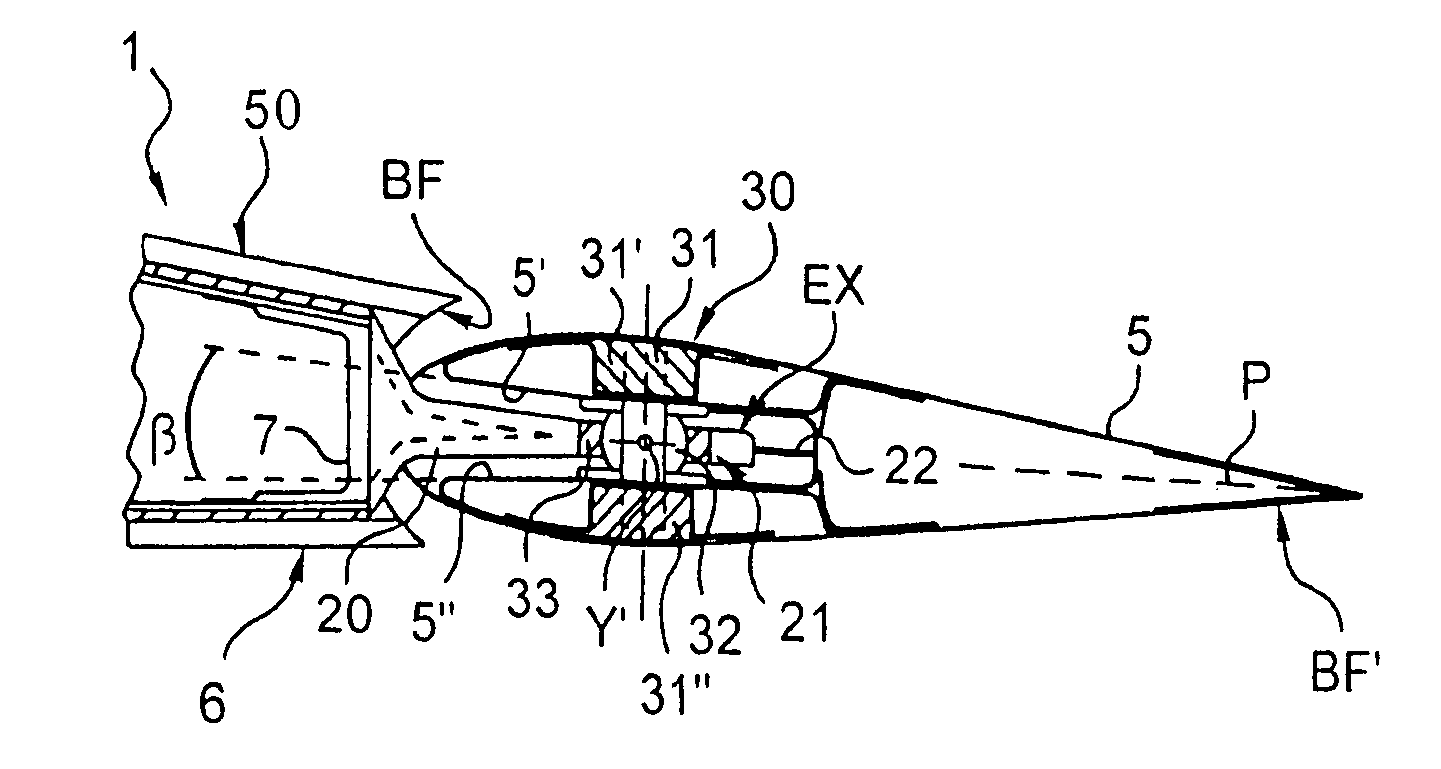Rotorcraft blade provided with a tiltable flap and a fastener tongue
a technology of fastener tongue and rotorcraft blade, which is applied in the direction of propellers, propulsive elements, water-acting propulsive elements, etc., can solve the problems of unusable and dangerous, noise or vibration disturbance, and premature wear
- Summary
- Abstract
- Description
- Claims
- Application Information
AI Technical Summary
Benefits of technology
Problems solved by technology
Method used
Image
Examples
first embodiment
[0055]FIG. 3 is a section of FIG. 1 showing a zone of the flap 5 that is provided with the control arm.
[0056]Whatever the embodiment, the control arm 46 is secured to the flap 5, e.g. by being embedded therein at the time of manufacture. Titling the control arm 46 thus causes the flap 5 to tilt in the same manner.
[0057]In the first embodiment, the actuator 10 is of the linear type, having an end 11 suitable for moving along an axis X as represented by double-headed arrow F. It should be observed that an access hatch 100 is provided in the pressure side face of the blade 1 to enable maintenance operations to be performed on the actuator 10, for example.
[0058]The transmission linkage serving to connect the actuator 10 to the flap 5 comprises in succession: a first connecting rod 40; a bended crank 41; an extensible flexible pivot 43; and the control arm 46.
[0059]The first connecting rod 40, which also passes through the rib 2, is secured firstly to the end 11 of the actuator, and seco...
second embodiment
[0064]In a second embodiment that is not shown in a figure, the actuator is of the rotary type. A device, e.g. a device of the type described above, that allows for lengthening along the axis X is then disposed between the control arm 46 and the rotary actuator.
[0065]FIG. 4 is a section of FIG. 1 in a zone of the flap 5 that has neither a fastener ball joint 30 nor a control arm 46.
[0066]It can then be seen that the free end EX of the tongue 20 is provided with a flexible tape 22, as explained above for the zone shown in FIG. 2.
PUM
 Login to View More
Login to View More Abstract
Description
Claims
Application Information
 Login to View More
Login to View More - R&D
- Intellectual Property
- Life Sciences
- Materials
- Tech Scout
- Unparalleled Data Quality
- Higher Quality Content
- 60% Fewer Hallucinations
Browse by: Latest US Patents, China's latest patents, Technical Efficacy Thesaurus, Application Domain, Technology Topic, Popular Technical Reports.
© 2025 PatSnap. All rights reserved.Legal|Privacy policy|Modern Slavery Act Transparency Statement|Sitemap|About US| Contact US: help@patsnap.com



